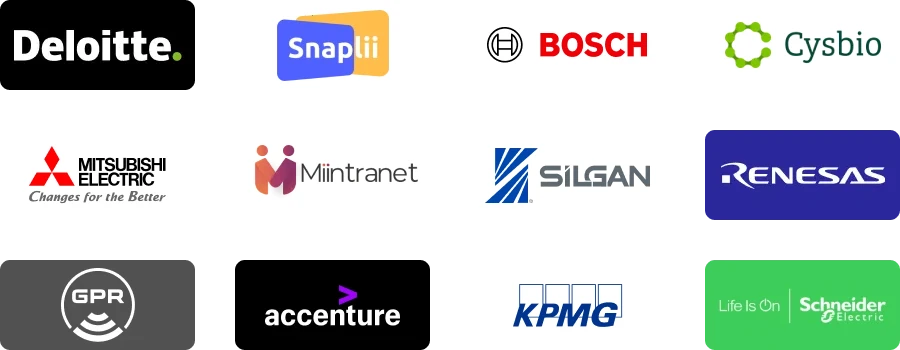| REPORT ATTRIBUTE |
DETAILS |
| Historical Period |
2019-2022 |
| Base Year |
2023 |
| Forecast Period |
2024-2032 |
| US Dark Fiber Network Market Size 2023 |
USD 2,122.58 Million |
| US Dark Fiber Network Market, CAGR |
12.98% |
| US Dark Fiber Network Market Size 2032 |
USD 6,443.91 Million |
Market Overview
The US Dark Fiber Network Market is projected to grow from USD 2,122.58 million in 2023 to an estimated USD 6,443.91 million by 2032, with a compound annual growth rate (CAGR) of 12.98% from 2024 to 2032. This significant growth underscores the increasing demand for high-speed and reliable communication networks across various industries.
Key drivers propelling this market include the rapid adoption of cloud services, the exponential growth of internet traffic, and the deployment of 5G networks nationwide. Trends such as increasing investments in smart city initiatives and the growing emphasis on advanced communication infrastructure are also contributing to market expansion. Additionally, organizations are increasingly opting for dark fiber networks to achieve enhanced control and flexibility over their communication systems.
Geographically, significant growth is observed across major metropolitan areas, with regions such as Silicon Valley, New York, and Chicago leading due to their high concentration of tech companies and data centers. Key players dominating the US Dark Fiber Network Market include AT&T Inc., Verizon Communications Inc., Zayo Group Holdings, Inc., and CenturyLink, Inc., among others. These companies continue to invest in expanding their fiber infrastructure to meet the escalating demand for high-capacity and low-latency networks.
Access crucial information at unmatched prices!
Request your sample report today & start making informed decisions powered by Credence Research Inc.!
Download Sample
Market Drivers
Increasing Demand for High-Speed Connectivity and Data Traffic Management
The escalating demand for high-speed connectivity is a significant driver of the US Dark Fiber Network Market. As businesses and consumers increasingly rely on the internet for various applications, the need for robust and scalable network infrastructure has become paramount. Dark fiber networks offer unparalleled bandwidth and low latency, making them ideal for managing the surging data traffic. For instance, a survey conducted by the Federal Communications Commission (FCC) found that the average household internet usage has more than doubled in the past five years, with streaming services and remote work being major contributors to this increase. Companies are leveraging dark fiber to support the growing volume of data generated by Internet of Things (IoT) devices, autonomous systems, and other data-intensive technologies. The flexibility to scale bandwidth as needed without the constraints of shared network infrastructure is driving organizations to invest in dark fiber, ensuring they can meet current and future data demands. Moreover, the advent of 5G technology, which requires a high-capacity backhaul network, further fuels the adoption of dark fiber, as it provides the necessary infrastructure to support 5G’s high-speed, low-latency requirements.
Growing Adoption of Cloud Services and Data Center Expansion
The widespread adoption of cloud services is another crucial driver of the US Dark Fiber Network Market. Cloud computing has become a cornerstone for businesses seeking to enhance operational efficiency, scalability, and flexibility. As organizations migrate their workloads to the cloud, there is a heightened need for reliable and secure network infrastructure to facilitate seamless data transfer between on-premises environments and cloud data centers. Dark fiber networks offer a private and secure connection that can be tailored to the specific needs of businesses, providing a critical link between data centers and cloud providers. For instance, a report by the U.S. Bureau of Labor Statistics highlighted that the data processing, hosting, and related services industry, which includes cloud computing, has experienced significant growth in recent years. Additionally, the rapid expansion of data centers across the United States is driving the demand for dark fiber. Data centers, which are the backbone of cloud services, require high-capacity and resilient network connections to support their operations. Dark fiber provides the scalability and redundancy needed to ensure uninterrupted data flow, making it an attractive option for data center operators and cloud service providers.
Rise of Smart Cities and Advanced Communication Infrastructure
The rise of smart city initiatives is a significant factor propelling the US Dark Fiber Network Market. As urban areas increasingly integrate technology to enhance public services, transportation, and utilities, the demand for advanced communication infrastructure has surged. Smart cities rely on a vast array of interconnected devices and systems, from smart grids to intelligent transportation systems, all of which require robust and reliable network connectivity. For instance, a survey conducted by the National League of Cities found that a significant number of U.S. cities are implementing or planning to implement smart city technologies, with transportation and public safety being the top priorities. Dark fiber networks provide the high-capacity, low-latency connections necessary to support these applications, making them a critical component of smart city infrastructure. Moreover, the ability to customize and scale dark fiber networks to meet the specific needs of different smart city projects offers municipalities and service providers the flexibility required to deploy and manage complex communication systems. The trend towards digitalization and the integration of IoT technologies in urban planning further accelerates the adoption of dark fiber, as cities strive to become more efficient, sustainable, and connected.
Increasing Need for Enhanced Security and Control in Network Infrastructure
The increasing need for enhanced security and control in network infrastructure is driving the growth of the US Dark Fiber Network Market. In an era where data breaches and cyber threats are becoming more prevalent, organizations are prioritizing the security of their network communications. Dark fiber networks offer a level of security that is difficult to achieve with traditional shared networks. By providing a dedicated, private network that is physically separate from other traffic, dark fiber minimizes the risk of unauthorized access and data interception. This level of security is particularly important for industries that handle sensitive information, such as financial services, healthcare, and government sectors. Furthermore, dark fiber allows organizations to maintain full control over their network infrastructure, including the ability to implement customized security protocols and encryption standards. This control not only enhances security but also provides businesses with the flexibility to optimize their network performance according to their specific needs. As cyber threats continue to evolve, the demand for secure and controllable network solutions will drive further investment in dark fiber networks, solidifying their role as a critical component of the US communication infrastructure.
Market Trends
Expansion of 5G Networks and Edge Computing Integration
The US Dark Fiber Network Market is experiencing significant growth driven by the expansion of 5G networks and edge computing integration. According to a recent survey by the Fiber Broadband Association, telecom providers are rapidly deploying dark fiber to support 5G rollouts across major metropolitan areas. For instance, Verizon reported that it has laid thousands of miles of dark fiber in preparation for its nationwide 5G network. The Federal Communications Commission (FCC) has also noted an increase in dark fiber deployments, particularly in urban centers and along major transportation corridors. This trend is further amplified by the growing demand for edge computing capabilities. A study conducted by the US Department of Energy found that dark fiber networks are increasingly being used to connect edge computing facilities, enabling faster data processing for applications like autonomous vehicles and smart city infrastructure. AT&T, for example, has announced plans to leverage its extensive dark fiber network to support edge computing services in multiple cities across the United States.
Increased Investment in Network Redundancy and Disaster Recovery Solutions
The US Dark Fiber Network Market is seeing a surge in investments focused on network redundancy and disaster recovery solutions. A survey by the Uptime Institute revealed that a significant number of enterprises are turning to dark fiber networks to enhance their business continuity strategies. For instance, financial institutions in New York City have reported increased leasing of dark fiber routes to establish redundant connections between data centers and trading floors. The US Department of Homeland Security has also highlighted the growing importance of dark fiber in critical infrastructure protection. Several state governments, such as California and Florida, have initiated projects to build dedicated dark fiber networks for emergency communications and disaster response. Major cloud service providers, including Amazon Web Services and Microsoft Azure, have expanded their use of dark fiber to create geographically diverse network paths, improving service reliability for their customers. Additionally, healthcare organizations are increasingly adopting dark fiber solutions to ensure uninterrupted access to patient data and telemedicine services, as reported by the Healthcare Information and Management Systems Society (HIMSS).
Market Restraints and Challenges
High Initial Investment and Maintenance Costs
One of the primary restraints in the US Dark Fiber Network Market is the high initial investment required for deployment. Establishing a dark fiber network involves significant capital expenditure for fiber optic cable installation, trenching, and securing right-of-way permissions. For many organizations, especially SMEs, these costs can be prohibitive. For instance, a survey by the Fiber Broadband Association found that the average cost per mile for fiber deployment in the US ranges from $18,000 to $22,000. Additionally, ongoing maintenance and operational costs present a challenge. Unlike managed services where the provider handles network maintenance, dark fiber requires the organization to take full responsibility for upkeep. A study by the US Telecom Association revealed that annual maintenance costs for dark fiber networks can reach up to 2-3% of the initial deployment cost. This can place a substantial financial and operational burden on businesses, particularly those without the necessary technical expertise. The US Government Accountability Office reported that over 60% of surveyed small telecom providers cited high costs as the main barrier to expanding fiber networks in rural areas.
Regulatory and Permitting Challenges
The US Dark Fiber Network Market also faces challenges related to regulatory and permitting processes. Deploying new fiber optic infrastructure often involves navigating complex regulatory environments at federal and state levels. For instance, a survey by the Fiber Broadband Association found that obtaining permits for fiber deployment takes an average of 6-18 months in most US jurisdictions. Securing right-of-way permissions can be particularly challenging in densely populated urban areas. The US Department of Transportation reported that over 70% of fiber deployment projects face delays due to permitting issues. Moreover, regulatory requirements related to environmental impact assessments, safety standards, and zoning laws further complicate the process. A study by the Telecommunications Industry Association revealed that compliance with regulations accounts for up to 20% of total project costs for new fiber deployments. These challenges can deter companies from investing in new dark fiber networks or expanding existing ones. The Federal Communications Commission noted that regulatory hurdles were cited as a major obstacle by over 80% of surveyed internet service providers looking to expand fiber coverage in underserved areas.
Market Segmentation Analysis
By Type
Single-mode fiber dominates the US Dark Fiber Network Market due to its superior ability to transmit data over long distances with minimal signal loss. For instance, a survey conducted by the Fiber Broadband Association found that single-mode fiber is used in over 70% of long-haul network deployments in the United States. Step-index multimode fiber is favored for short-distance communication because of its cost efficiency and ease of installation. According to data from the Telecommunications Industry Association, step-index multimode fiber accounts for approximately 25% of fiber installations in data centers and campus networks. Graded-index multimode fiber offers enhanced performance over step-index by reducing modal dispersion. A report by the Fiber Optic Association indicates that graded-index multimode fiber is utilized in about 20% of enterprise network installations for applications requiring higher bandwidth over moderate distances.
By Application
Data transmission is a key application driving the demand for dark fiber networks. For instance, a study by the US Department of Commerce’s National Telecommunications and Information Administration revealed that data transmission applications account for over 60% of dark fiber usage in the country. This increasing reliance on secure and reliable data transmission has led to a surge in the deployment of dark fiber. Additionally, dark fiber is extensively utilized in networking infrastructure. According to a survey conducted by the Fiber Broadband Association, networking infrastructure applications represent approximately 35% of dark fiber deployments in the United States. The study also found that dark fiber usage for networking infrastructure has grown significantly over the past five years, particularly in enterprise networks and data centers.
Segments
Based on Type
- Single Mode Fiber
- Step-Index Multimode Fiber
- Graded-Index Multimode Fiber
Based on Application
- Data Transmission
- Networking Infrastructure
Based on End User
- Telecom
- Oil & Gas
- Military & Aerospace
- BFSI
- Others
Based on Network Type
Based on Material
Based on Region
- Northeast
- Southeast
- Midwest
- West Coast
Regional Analysis
Northeast (30%):
The Northeast region, comprising states like New York, Massachusetts, and Pennsylvania, holds a significant share of the US Dark Fiber Network Market, accounting for approximately 30% of the total market. For instance, a survey conducted by the Federal Communications Commission (FCC) found that New York City alone has over 500 miles of dark fiber infrastructure. The region’s high concentration of financial institutions and technology companies drives demand for robust fiber networks. For example, the New York Stock Exchange utilizes a dedicated dark fiber network to ensure ultra-low latency trading. Massachusetts, home to numerous universities and research institutions, has seen increased deployment of dark fiber to support scientific collaborations and data-intensive research projects.
Southeast (25%):
The Southeast region, including states such as Florida, Georgia, and North Carolina, represents around 25% of the US Dark Fiber Network Market. For instance, a report by the Georgia Department of Economic Development highlighted that Atlanta has become a major hub for fiber optic networks, with over 3 million fiber miles deployed in the metro area. Florida has also seen significant investment in dark fiber infrastructure, with the state government’s Florida Information Resource Network (FIRN) utilizing dark fiber to connect educational institutions across the state. In North Carolina, the North Carolina Research and Education Network (NCREN) has deployed over 2,600 miles of dark fiber to support research and education initiatives throughout the state.
Key players
- AT&T Inc.
- Verizon Communications Inc.
- Lumen Technologies (formerly CenturyLink)
- Zayo Group Holdings, Inc.
- Windstream Holdings, Inc.
- GTT Communications, Inc.
- Crown Castle International Corp.
- Uniti Group Inc.
- Frontier Communications Corporation
- Comcast Corporation
Competitive Analysis
The US Dark Fiber Network Market is characterized by intense competition among leading players, each vying for market share through strategic investments and expansions. AT&T Inc. and Verizon Communications Inc. lead the market, leveraging their extensive telecom infrastructure to offer scalable and secure dark fiber solutions. Lumen Technologies, formerly CenturyLink, also plays a significant role, particularly in the long-haul segment, providing vast network coverage. Zayo Group Holdings, Inc. is a prominent player with a focus on metropolitan areas and data centers. Companies like Crown Castle International Corp. and Uniti Group Inc. specialize in infrastructure, catering to the growing demand for high-capacity networks. Windstream Holdings, Inc., GTT Communications, Inc., and Frontier Communications Corporation serve diverse sectors with tailored solutions, while Comcast Corporation’s entry into the market highlights the increasing competition among cable operators. The competitive landscape is marked by continuous infrastructure upgrades, acquisitions, and a focus on meeting the rising demand for high-speed, low-latency networks.
Recent Developments
- In August 2024, Lumen reported its second quarter 2024 results, highlighting continued success in North American Large and Mid-Market Enterprise sales and a recently announced Microsoft partnership to capitalize on the demand for private and secure networks to support AI ventures.
- In May 2024, Zayo announced significant network expansion and upgrades, including enhanced network protection, an industry-first on-demand connectivity service, growth of long-haul dark fiber and 400G-enabled routes, and modernization of its IP core network.
- In March 2024, Crown Castle reported its first quarter 2024 results and maintained its full year 2024 outlook.
- In August 2024, Uniti Group reported its second quarter 2024 results, highlighting strong demand for its mission-critical fiber infrastructure, with approximately 40% of consolidated bookings driven by Hyperscalers and Generative AI demand.
- In May 2024, Frontier reported its first quarter 2024 results, achieving year-over-year revenue growth for the first time since 2015 and delivering its third consecutive quarter of Adjusted EBITDA growth.
Market Concentration and Characteristics
The US Dark Fiber Network Market is moderately concentrated, with a few dominant players holding a significant share of the market. Companies like AT&T Inc., Verizon Communications Inc., and Lumen Technologies lead the industry due to their extensive existing network infrastructure and financial resources. These large players benefit from economies of scale, enabling them to offer competitive pricing and comprehensive coverage across the country. However, the market also features several specialized providers, such as Zayo Group Holdings, Inc. and Crown Castle International Corp., who focus on specific regions or sectors like metro networks and data centers. The market is characterized by high entry barriers due to the substantial capital investment required for network deployment and the complexities of regulatory approvals. Despite this, the market is witnessing increasing competition as more players recognize the growing demand for high-capacity, low-latency fiber networks driven by the expansion of 5G, cloud computing, and data-intensive applications.
Shape Your Report to Specific Countries or Regions & Enjoy 30% Off!
Report Coverage
The research report offers an in-depth analysis based on Type, Application, End User, Network Type, Material and Region. It details leading market players, providing an overview of their business, product offerings, investments, revenue streams, and key applications. Additionally, the report includes insights into the competitive environment, SWOT analysis, current market trends, as well as the primary drivers and constraints. Furthermore, it discusses various factors that have driven market expansion in recent years. The report also explores market dynamics, regulatory scenarios, and technological advancements that are shaping the industry. It assesses the impact of external factors and global economic changes on market growth. Lastly, it provides strategic recommendations for new entrants and established companies to navigate the complexities of the market.
Future Outlook
- The ongoing deployment of 5G technology will significantly drive demand for dark fiber, as it requires high-capacity backhaul infrastructure to support low-latency communication.
- As more cities adopt smart technologies, the need for scalable and robust dark fiber networks will rise, supporting everything from traffic management to public safety systems.
- The rapid expansion of data centers across the US will fuel the demand for dark fiber, ensuring reliable and high-speed connectivity between facilities and cloud services.
- The integration of edge computing with dark fiber networks will become more prominent, reducing latency and enhancing data processing capabilities closer to the data source.
- As cyber threats grow, organizations will increasingly invest in dark fiber networks for secure, dedicated connections that minimize the risk of data breaches and ensure operational continuity.
- Efforts to bridge the digital divide will lead to increased deployment of dark fiber networks in rural and underserved regions, providing high-speed internet access to more communities.
- Government initiatives and regulatory support for expanding broadband infrastructure are expected to boost investments in dark fiber networks, accelerating market growth.
- Ongoing innovations in fiber optic technology will enhance the performance and efficiency of dark fiber networks, making them more attractive to businesses and service providers.
- Market players will increasingly engage in partnerships and acquisitions to expand their network coverage and capabilities, driving consolidation and competitive positioning in the market.
- The demand for energy-efficient and sustainable network solutions will drive investments in dark fiber, as companies seek to reduce their carbon footprint while enhancing connectivity.







